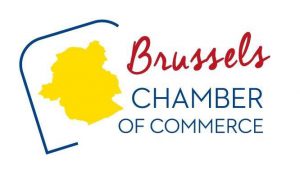The Commission adopted end of September two proposals to adapt liability rules to the digital age, circular economy and the impact of global value chains. Firstly, it proposes to modernise the existing rules on the strict liability of manufacturers for defective products (from smart technology to pharmaceuticals). The revised rules will give businesses legal certainty so they can invest in new and innovative products and will ensure that victims can get fair compensation when defective products, including digital and refurbished products, cause harm. Secondly, the Commission proposes for the first time a targeted harmonisation of national liability rules for AI, making it easier for victims of AI-related damage to get compensation. The new rules will ensure that victims benefit from the same standards of protection when harmed by AI products or services, as they would if harm was caused under any other circumstances.
Revised Product Liability Directive, fit for the green and digital transition and global value chains
The revised Directive modernises and reinforces the current well-established rules, based on the strict liability of manufacturers, for the compensation of personal injury, damage to property or data loss caused by unsafe products, from garden chairs to advanced machinery. It ensures fair and predictable rules for businesses and consumers alike by:
• Modernising liability rules for circular economy business models: by ensuring that liability rules are clear and fair for companies that substantially modify products.
• Modernising liability rules for products in the digital age: allowing compensation for damage when products like robots, drones or smart-home systems are made unsafe by software updates, AI or digital services that are needed to operate the product, as well as when manufacturers fail to address cybersecurity vulnerabilities.
• Creating a more level playing field between EU and non-EU manufacturers: when consumers are injured by unsafe products imported from outside the EU, they will be able to turn to the importer or the manufacturer’s EU representative for compensation.
• Putting consumers on an equal footing with manufacturers: by requiring manufacturers to disclose evidence, by introducing more flexibility to the time restrictions to introduce claims, and by alleviating the burden of proof for victims in complex cases, such as those involving pharmaceuticals or AI.
Easier access to redress for victims AI Liability Directive
The purpose of the AI Liability Directive is to lay down uniform rules for access to information and alleviation of the burden of proof in relation to damages caused by AI systems, establishing broader protection for victims (be it individuals or businesses), and fostering the AI sector by increasing guarantees. It will harmonise certain rules for claims outside of the scope of the Product Liability Directive, in cases in which damage is caused due to wrongful behaviour. This covers, for example, breaches of privacy, or damages caused by safety issues. The new rules will, for instance, make it easier to obtain compensation if someone has been discriminated in a recruitment process involving AI technology.
The Directive simplifies the legal process for victims when it comes to proving that someone’s fault led to damage, by introducing two main features: first, in circumstances where a relevant fault has been established and a causal link to the AI performance seems reasonably likely, the so called ‘presumption of causality’ will address the difficulties experienced by victims in having to explain in detail how harm was caused by a specific fault or omission, which can be particularly hard when trying to understand and navigate complex AI systems. Second, victims will have more tools to seek legal reparation, by introducing a right of access to evidence from companies and suppliers, in cases in which high-risk AI is involved.
The new rules strike a balance between protecting consumers and fostering innovation, removing additional barriers for victims to access compensation, while laying down guarantees for the AI sector by introducing, per instance, the right to fight a liability claim based on a presumption of causality.
What are the changes for companies?
Already today, companies are obliged to compensate people injured by defective products. In addition, the new PLD will now require companies to disclose evidence that a claimant would need to prove their case in court. This is to address the asymmetry of information between the manufacturer and consumer: manufacturers know much more than consumers about how the product in question was produced and brought to market.
Who is liable for defective products manufactured outside the EU?
The existing PLD makes importers liable for defective products manufactured outside the Union. This is because it would have been too difficult for consumers to seek compensation from companies outside the Union.
Today’s global value chains allow consumers to buy products from outside the Union directly, without an importer. That is why the new PLD will allow consumers to seek compensation from the non-EU manufacturer’s representative. Thanks to the Market Surveillance Regulation and the upcoming revision of the General Product Safety Regulation, this will mean that, there will be an EU-based liable person from whom to seek compensation.
Distributors (offline and online sellers) can also be held liable if they fail to give the name of the EU-based liable person to the injured person on request. This applies to online marketplaces too, but only if they present themselves to the consumer as a distributor.
Q & A on the revision of the Product Liability Directive
Next steps
The Commission’s proposal will now need to be adopted by the European Parliament and the Council.
It is proposed that five years after the entry into force of the AI Liability Directive, the Commission will assess the need for no-fault liability rules for AI-related claims if necessary.
Source: European Commission





